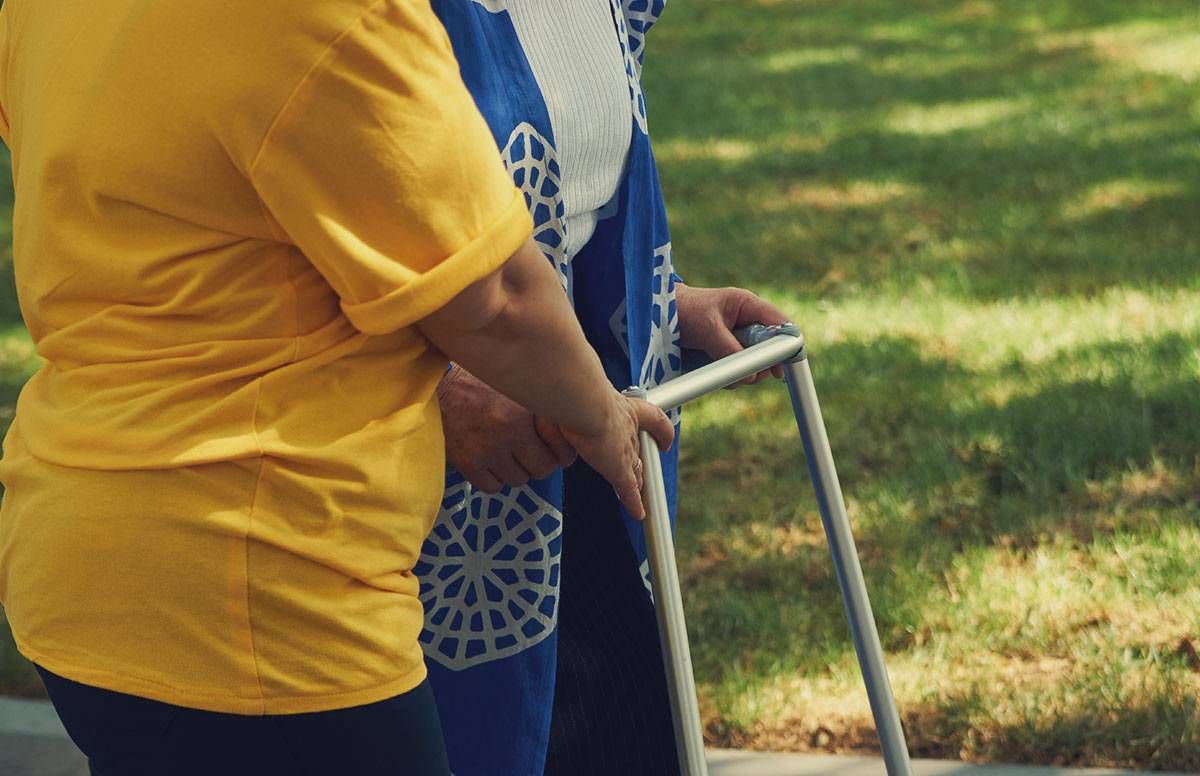How the Topic of Mobility Could Come Up This Holiday Season
Holiday gatherings provide chances to notice changes in older family members
The holidays are a time for gathering and spending quality time with family members we don’t often see. It may also be the first time you notice a change in their health, such as their pace and mobility.

According to the U.S. Census Bureau, the most common disability facing older Americans is mobility. It’s also one of the most common side effects of illnesses of people of all ages.
My family and I recently helped my mom with her mobility challenges and found a solution that has improved her safety and her well-being. You can make a big difference in the lives of your aging family members by facilitating an open and caring conversation about your concerns.
Has Mobility Become an Issue?
The following questions can help you determine if mobility is becoming a challenge for your aging family member:
- Does your family member complain about mobility? Having trouble getting around may start to disrupt a person's quality of life.
- Does your family member talk about being less active and missing out on activities? Loss of mobility can lead to loneliness and isolation.
- Do you notice a change in your family member’s pace? Slowing down is one of the first signs of mobility loss.
- Do you notice that your family member is increasingly bumping into things? Loss of balance or coordination are important signs to note.
Recent market innovations have completely changed our perception of what a walker can represent.
If you notice one or more of those challenges, it’s time to ask about it. Mobility loss can quickly lead to other health ailments, including obesity, frailty, hypertension, arthritis and mental health-related challenges. If you are concerned, be sure your family member sees their doctor to ensure the mobility loss is not part of an underlying health condition.
As I found in my family, the best approach to raising these concerns is through a direct, respectful and loving conversation. During a regular check-up, my mom’s doctor suggested she begin using a walker rather than her cane to help her balance issues. My mom felt that using a walker full-time meant she had to go out into the world with a sign that she needed help. For her, that was devastating.
I first focused on validating how she felt. That opened the conversation to what we could do about it. We then began a discussion about options, which moved our focus from the problem to finding the right solution.
What Type of Walking Aid Will Work Best?
The use of a mobility aid, like a walker and rollator (a rolling walker with a seat), can be a simple, lasting solution. Yet, if you’re not familiar with the category, you may wonder where to start.
When shopping for a mobility aid, keep in mind:
- Does your family member want to get back to an active lifestyle? Consider an aid that folds easily and can be stored in a car or public transportation.
- Does your family member have an older spouse or a relative in a caregiver role? A lightweight option may be important for easy transport.
- Does your family member enjoy shopping or running errands that require merchandise? Having accessory options that can connect to the device is a key consideration.
- Does your family member spend time waiting for a bus or an Uber or Lyft ride? A walker with a built-in seat can help provide a comfort factor.
- Does your family member value products that reflect their style and personality? There are models that can be highly personalized, with sleek style options and vibrant colors.
New Options Combine Function and Pleasing Design
Recent market innovations have completely changed our perception of what a walker can represent. What was once a sign of dependence can now be a symbol of empowerment. My mom recently discovered an option that reflects her desire to remain as independent as possible.
We found a high-quality lightweight walker with a modern design. It has a sleek look that reflects my mom’s ready-to-live attitude, which gives her hope. And I get peace of mind that she’s safe. My dad isn’t drained from having to help my mom stay upright. And my mother is proud to show it off (strangers regularly compliment her) which means she’s out of the apartment, walking more and walking safely — both huge benefits for her.
During this holiday season, you may find yourself worrying about your family member’s safety. The best way to help is to start a conversation. The sooner you have it, the sooner you can help your family member take the right steps to moving with confidence.

